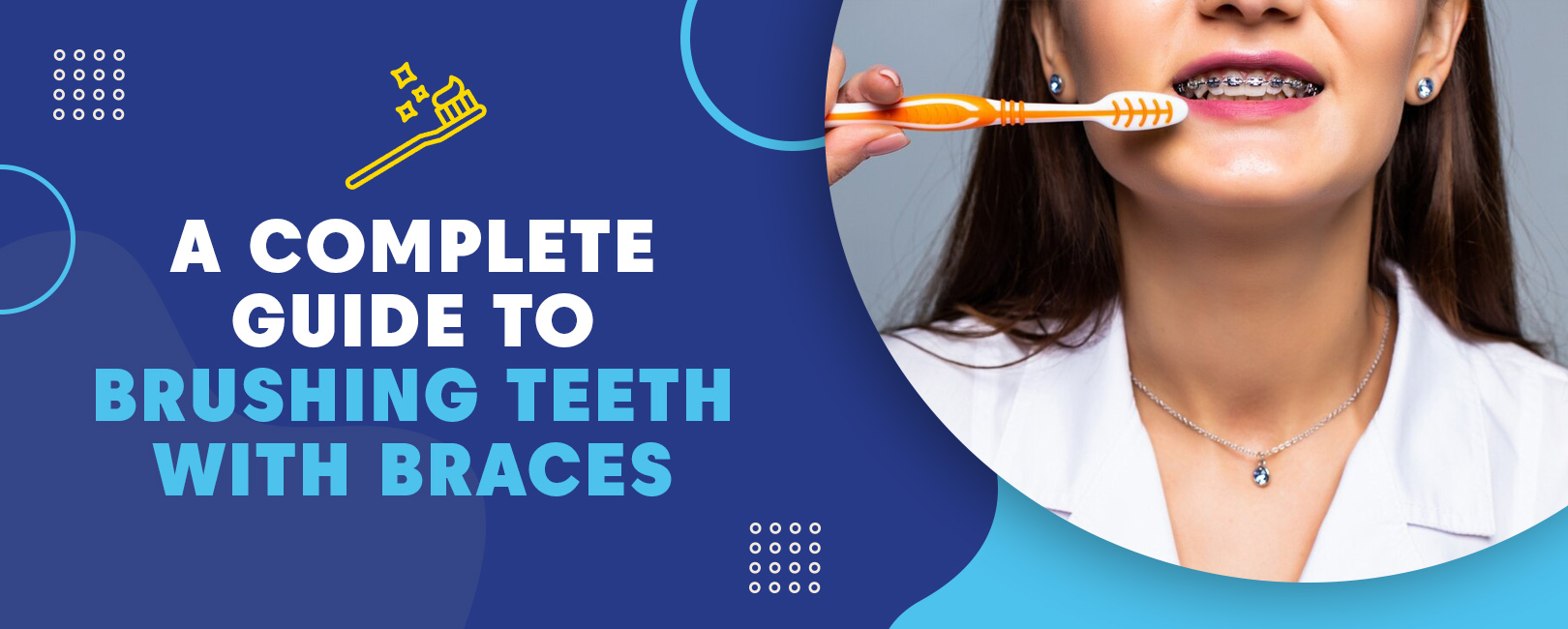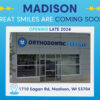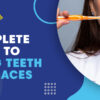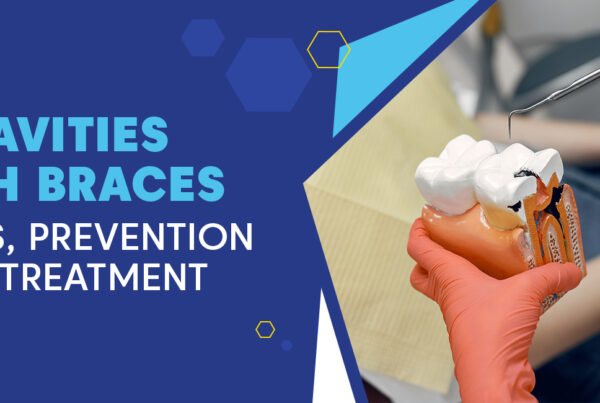Getting that beautiful smile you’ve always wanted involves more than just wearing orthodontic appliances; you must take maximum care of your oral hygiene so that your teeth and gums remain in excellent condition.
Proper brushing and flossing techniques with braces will ensure that patients don’t experience any discomfort, cavities, or inflammation of the gum tissue; learning how to brush your teeth with braces may take some practice, but it’s worth doing it right.
Brushing your teeth regularly and correctly is important, especially when you just got your braces removed. To make it easier, here is a step-by-step guide on brushing with braces!
Why Brushing Teeth with Braces Is Important?
Proper brushing and using different dental accessories like flossing can prevent and treat diseases that originate in the mouth and impact oral health.
When a patient undergoes orthodontic treatment to align their teeth, the need to prevent oral infections becomes even more critical; it’s crucial to remember that throughout the treatment, the mouth is more vulnerable to changes and damage that could cause gum diseases.
To achieve better results in the alignment of teeth, the patient should follow the specific instructions of their orthodontist; this way, the mouth will stay healthy and protected. Brushing teeth with braces may take more time and effort, but adjusting your oral hygiene routine according to your needs is necessary.
Simple Steps to Follow on Brushing with Braces
Your braces oral hygiene routine is vital to the success of your orthodontic treatment; it involves brushing, flossing, and mouthwash.

Braces can trap food particles and the longer they remain trapped, the greater the risk of developing dental problems. If you have braces, you should brush your teeth after every meal – even after that mid-afternoon vending machine treat or late night snack.
- Start by Rinsing Your Mouth
Before you start brushing, removing any movable parts of your braces is a good idea to make it easier to clean your teeth. It is advisable to rinse with water to remove as many food particles that may have been stuck between the braces after eating as possible.
- Brush Well
Brush your teeth after every meal and snack; brushing at night is especially important to prevent plaque buildup overnight.
Use a toothbrush with a small head to easily reach all parts of the mouth, including the teeth and gums. Choose a brush with soft bristles and be mindful of the direction of your movements, avoiding the bristles from directly hitting the braces to prevent wearing down.
Clean both above and below the brackets with circular movements, covering the entire mouth; pay special attention to the gum area to prevent plaque buildup. Also, remember to clean the inside part of the teeth.
- Make the Correct Movements
When brushing our teeth, braces can damage the toothbrush if we apply too much force. Therefore, we should brush without excessive pressure to keep the bristles straight.
In addition to this, the angle at which we should use the toothbrush completely changes when we have braces. Without braces, we brush perpendicular to the teeth, applying direct pressure. However, with orthodontic braces, this needs to change. To clean beneath the wire, the toothbrush should be used at a 45° angle with up and down movements for around two minutes.
- Use Fluoride Toothpaste
Using fluoride toothpaste is recommended, as this helps strengthen the teeth and prevent cavities. Toothpaste and the proper brushing technique help remove dental plaque and clean and polish the teeth.
- Use of Dental Floss
After brushing, use dental floss to clean areas where the brush cannot reach. Using dental floss with braces is more complex than doing it without them, but as you keep using it repeatedly, the process becomes easier; using it once or twice a day is enough. Make sure to floss between all interdental spaces for a complete and effective clean.
- Finish with a Rinse
Finally, it’s time to rinse again; this is necessary because sometimes, after using dental floss, there may be loose debris in the mouth, and a good rinse eliminates them all.
It is recommended that once a day, this rinsing is done with an antiseptic mouthwash, preferably alcohol-free.
Can I Eat Hulless Popcorn with Braces?
Hull-less or hulles popcorn is made from a smaller kernel that still contains a hull. In reality, there is no such thing as hulless popcorn. The kernel’s hull is the seed, and popcorn cannot exist without a seed; however, smaller hulled popcorn, when popped, is smaller, tenderer and less noticeable.
Other Tips for Brushing Teeth with Braces
If you find cleaning areas near brackets and wires difficult, some special tools can help you. One such tool is an interdental brush or proxabrush; it has a small cluster of bristles that stick out in all directions, like a pipe cleaner. Use the toothbrush gently and carefully to clean the tiny spaces under the wires, around bands and brackets.
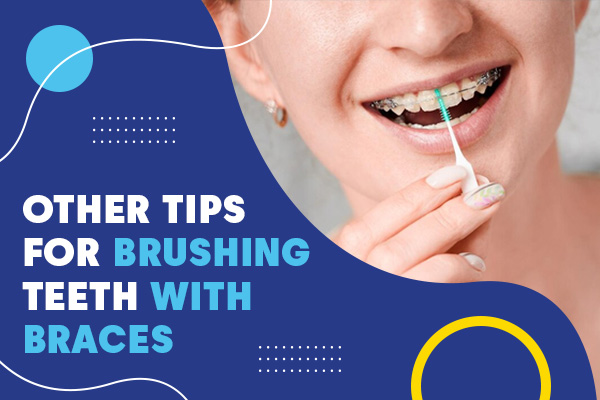
Another helpful tool for cleaning braces is an oral irrigator or “water pick,” which uses a stream of pressurized water toward the teeth to remove food particles from difficult-to-reach areas. While it’s easy to use, an oral irrigator doesn’t replace using a toothbrush or dental floss, but it can be very effective when used along with proper brushing techniques and flossing.
Effects of Not Brushing Teeth with Braces
Maintaining good oral hygiene is integral, whether you wear braces or not; using braces simply means taking extra care of your teeth and reducing the risk of other dental problems. Due to their structure, braces can trap plaque and food particles, leading to the buildup of bacteria, debris, and plaque around the brackets, which can damage the enamel and cause cavities if not removed.
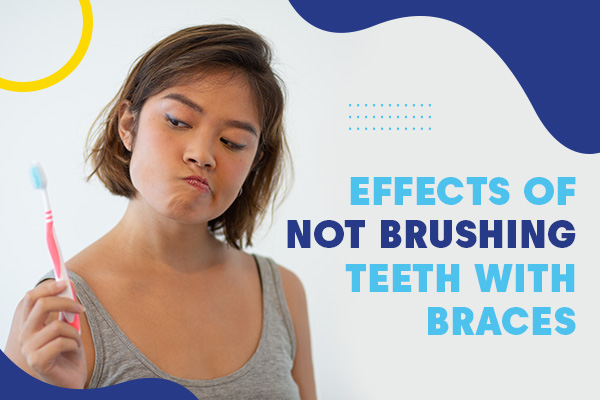
If you are not careful about your oral hygiene, you may have a mouth full of cavities that require treatment when your braces are removed. In the worst-case scenario, the cavities could worsen and cause pain while you still have the braces on. In that situation, you must visit an orthodontist who will remove the brackets, treat the cavities, clean the plaque, reapply the brackets, and replace the wires.
When oral hygiene is not adequately maintained, bacteria form in the mouth. If not removed in time, they can damage the tissue that holds the teeth, leading to periodontal disease. Bacteria can also document the bloodstream and cause other health problems; the use of orthodontic appliances such as braces worsens these problems, as they need to be removed at each visit to remove plaque, treat cavities, or address other dental issues that may occur due to insufficient oral hygiene.
Conclusion
Taking good care of your teeth by brushing regularly and maintaining good oral hygiene is important when you have braces.
It is advisable to brush after every meal and make sure to gently massage the gums. The brackets and bands should be kept clean and shiny, and the gums should remain pink and firm. Not maintaining proper oral hygiene can result in permanent white stains on the teeth, cavities, gum diseases, and even bone loss. In extreme cases, this could lead to the suspension of the treatment before achieving the desired result. It is important to continue visiting your dentist regularly for check-ups and cleanings during your orthodontic treatment.
The professionals at Orthodontic Experts can offer guidance on how to maintain oral hygiene and deal with any dental issues in patients with braces.


